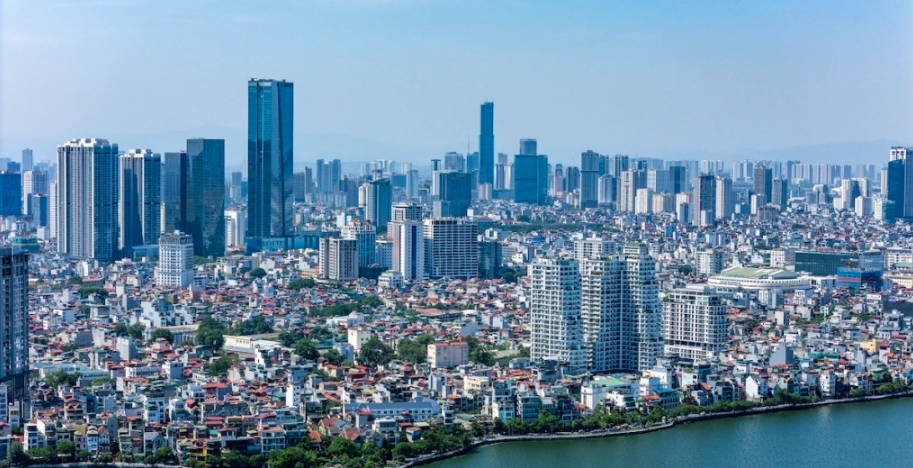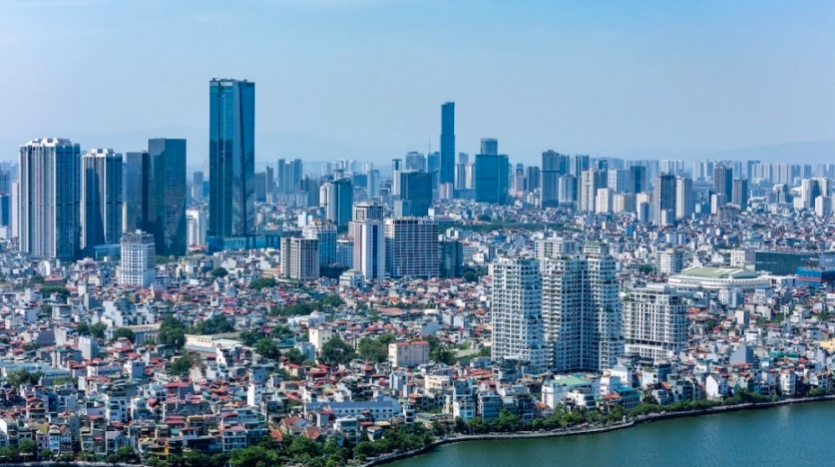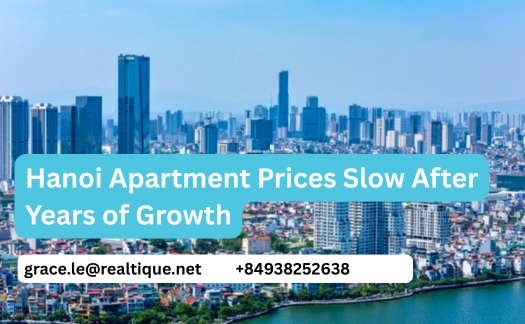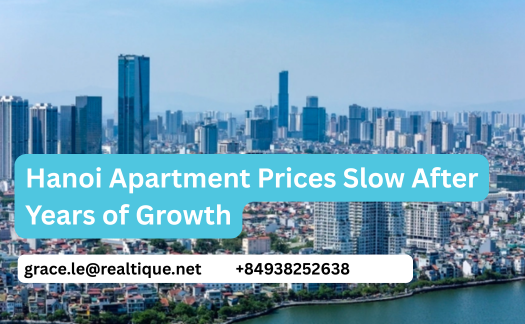Hanoi Apartment Prices Slow After Years of Growth
Hanoi’s condo market cools as secondary prices stall and new listings surge, signaling a shift after two years of sharp price hikes.

Table of Contents
Apartment Prices in Hanoi Show Signs of Cooling
In Q1 2025, both primary and secondary condominium prices in Hanoi slowed noticeably, according to real estate firm CBRE. After experiencing sharp growth in 2023, the average primary market price reached VND 75 million per square meter (excluding VAT and maintenance fees), marking the lowest quarterly growth since Q2 2023.
This moderation is most visible in large-scale urban developments located in Hanoi’s suburban districts. The secondary market also reflected the slowdown, with resale prices rising by only 3% quarter-over-quarter, averaging VND 50 million per square meter. Most projects showed little to no price movement, with the exception of high-demand properties in central districts with strong rental potential.
Research by Cushman & Wakefield corroborated these findings, noting that Hanoi’s condominium demand is waning. In Q1, just over 4,300 units were sold, a drop of 53% compared to the previous quarter. The absorption rate declined as homebuyer sentiment cooled, with many delaying purchases amid ongoing economic uncertainty.
High-End Supply Dominates, Affordable Homes Scarce
While transaction volumes declined, prices of newly launched projects remained elevated. Cushman & Wakefield reported that luxury and high-end units accounted for over 77% of new supply in Q1 2025, with very few affordable housing projects introduced.
This imbalance makes it difficult for first-time buyers and lower-income households to enter the market. Popular projects such as Ha Do Park View and Trung Yên Plaza (Cầu Giấy), Masteri West Heights and FLC Garden City (Nam Từ Liêm), and CT4 Yên Nghĩa and Mulberry Lane (Hà Đông) have started to see price declines of 2-5% since their peaks in early 2024, according to Batdongsan data.
"Loss Cutting" Listings May Be Marketing Tactics
A trend has emerged where sellers and agents advertise “loss-cutting” deals to attract buyers. However, Nguyễn Hoài An warns that many of these reductions are merely sellers tempering overly optimistic expectations, rather than incurring real losses. Owners who bought properties two to three years ago are unlikely to be selling below their purchase prices.
Nonetheless, actual distressed sales have been observed, particularly in new developments that previously experienced rapid price hikes. This is especially evident in the western, eastern, and southern zones of Hanoi, where speculation has been rampant.
Oversupply Adds Pressure on Prices
The situation is compounded by an expected surge in new supply. CBRE estimates Hanoi could welcome around 31,700 new condominium units in 2025, primarily concentrated in suburban districts like Đan Phượng, Long Biên, and Đông Anh.
This incoming inventory places further pressure on investors to sell quickly, particularly as buyer psychology stabilizes and the sense of urgency fades. “With supply no longer constrained and buyer sentiment normalizing, Hanoi condos are losing their appeal as high-yield investment assets,” said Mr. Toản.
In summary, Hanoi’s real estate market is transitioning from an era of aggressive price growth to a more balanced phase. While prices remain high, growth is flattening. Investors and end-users alike must adjust expectations as the capital city enters a new property cycle defined by increased supply, economic caution, and a shift away from speculative buying
Thinking about investing in Vietnam’s real estate market?
🏘️ Let Realtique guide you with expert insights, trusted advice, and tailored property options for overseas investors.









